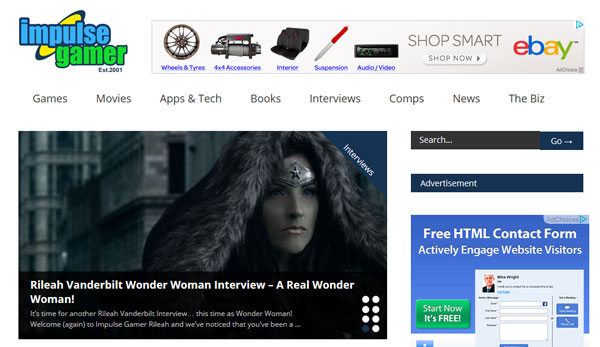But Consumers Still Don’t Adequately Protect These Assets Across All Their Digital Devices
SYDNEY, Australia, Sept. 27, 2011 – McAfee (NASDAQ:INTC) today released the results of a new global study, revealing that consumers place an average value of US$37,438 on the “digital assets” they own across multiple digital devices, yet more than a third lack protection across all of those devices. In the U.S., people valued their assets at a higher figure than anywhere else, at nearly US$55,000. Australian respondents valued their assets at an average value of US$20,948 (AU$21,723).
Research firm MSI International surveyed more than 3,000 consumers in 10 countries about the financial value they would assign to digital assets such as photo libraries, personal information and entertainment files, as well as their attitudes toward protecting them across computers, tablets and smartphones.
“Our smartphones, tablets and digital devices contain personal and sensitive information such as family photos, online passwords and work-related data. This is the type of material we need to safeguard most, however many Australians risk losing this information by failing to adequately protect their digital devices,” said Monica Kelly, Director for Consumer, Small Business and Mobile, McAfee ANZ.
Despite the high financial and emotional value of their assets stored in various places, 38 per cent of Australian respondents are not securing all of their devices. Cost is one of the main reasons Australians don’t purchase additional security protection (37 per cent). However the large majority (95 per cent) found that security and protection of their digital assets was very important and regarded spending money on protection of their digital assets as money well spent (91 per cent).
The number of Internet-connected devices also continues to explode, contributing to rapid changes in the consumer-facing threat landscape.
- McAfee found that 27 per cent of Australian consumer Internet users now own at least five devices per household, with 64 per cent owning at least three
- Hackers continue to target PCs, but with the increased popularity of tablets, smartphones and Macs, threats are becoming both more common and more complex for non-PC devices. For example, according to McAfee Labs, malware targeted at Android devices jumped 76 per cent in the last three months (Source: McAfee Q2 Threats Report).
“The consumer technology landscape is changing with the popularity of smartphones, tablets, netbooks and Macs growing every day. Consumers want to protect their personal digital assets and with the number of digital devices we now use and own; there is a lot of vital information that we can stand to lose! With the considerable amount of money and time spent building up their digital assets, not to mention the emotional value, consumers need an easier way to protect all their devices from online threats and from being destroyed,” said Monica Kelly, Director for Consumer, Small Business and Mobile, McAfee ANZ.
McAfee is addressing the growing digital needs of today’s consumers by launching McAfee All Access; the industry’s first cross-device security solution that protects multiple Internet-enabled devices (PCs, Macs, smartphones, netbooks and tablets) under one annual plan.
Key Findings from the McAfee “Digital Assets” Survey
Living in a Multi-Device World
- 27 per cent of Australian consumer Internet users now own at least five devices per household, with 64 per cent owning at least three
- 42 per cent spend more than 20 hours per week using a digital device for personal use (Australia).
The Financial and Emotional Value of Digital Assets
- Regionally, North American respondents (U.S. and Canada) had the highest perceived value of their total digital assets, with an average cited value of US$52,154 (US$54,722 in the U.S. alone)
- This is compared with an average value of US$28,461 across Europe (U.K., Germany, France, Spain, Italy, The Netherlands), US$23,938 in Japan and US$20,948 (AU$21,723) in Australia
- As a global average, respondents had 2,777 digital files stored on at least one digital device, at a total value of US$37,438
o These assets included: entertainment files (i.e. music downloads), personal memories (i.e. photographs), personal communications, (i.e. emails or notes), personal records (i.e. health, financial, insurance), career information (i.e. resumes, portfolios, cover letters, email contacts) and hobbies and creative projects
o 27 per cent of those assets (global results) were considered “impossible to restore” if lost and not backed up properly, and had an average value of US$10,014
- Global respondents predicted that it would take them on average 82 hours to restore their digital assets if lost.
Personal Memories Trump Entertainment in Digital Value
- Personal memories, such as photographs, are the main digital asset that global respondents categorised as “impossible to restore” if lost and not backed up (73 per cent). Global respondents valued personal memories at an average of US$18,919, compared to:
o US$6,956 for Personal Records
o US$3,798 for Career Information
o US$2,848 for Hobbies and Projects
o US$2,825 for Personal Communications
o US$2,092 for Entertainment Files.
Attitudes toward Online Security and Protection
- Despite the high value of their digital assets, people still aren’t securing every device they own. The McAfee survey found that more than a third of the global respondents (36 per cent) don’t have security protection on all of their devices and seven per cent have no protection at all – leaving potentially thousands of dollars worth of digital assets at risk, if stored on an unprotected device. 38 per cent of Australian respondents are not securing all of their devices
- Although 86 per cent of global respondents (91 per cent of Australian respondents) agreed that purchasing protection of their digital assets is money well spent; in general, less than 50 per cent of global respondents (53 per cent of Australian respondents) purchased security solutions as the main way of protecting all or some of their devices
- 34 per cent of Australian respondents use only free protection on their devices (to protect some or all of them), with another nine per cent using a combination of paid and free solutions. However, when it comes to security software, free is not better. A September 2010 USA TODAY survey of 16 anti-virus companies shows that no-cost anti-virus programs generally lack important features such as a firewall, website health checks, and automatic updates
- Cost is one of the main reasons people don’t purchase additional security protection (37 per cent of Australian respondents said this).
- Despite the evolving threats across devices like tablets, smartphones and Macs, and the high value of the files stored on these devices, 40 per cent of all respondents globally do not worry much about their protection.
About McAfee
McAfee, a wholly owned subsidiary of Intel Corporation (NASDAQ:INTC), is the world’s largest dedicated security technology company. McAfee delivers proactive and proven solutions and services that help secure systems, networks, and mobile devices around the world, allowing users to safely connect to the Internet, browse and shop the Web more securely. Backed by its unrivalled Global Threat Intelligence, McAfee creates innovative products that empower home users, businesses, the public sector and service providers by enabling them to prove compliance with regulations, protect data, prevent disruptions, identify vulnerabilities, and continuously monitor and improve their security. McAfee is relentlessly focused on constantly finding new ways to keep our customers safe. http://www.mcafee.com/au
Note: McAfee is a registered trademark or trademark of McAfee, or its subsidiaries in the United States and other countries. Other names and brands may be claimed as the property of others. © 2011 McAfee All rights reserved.



